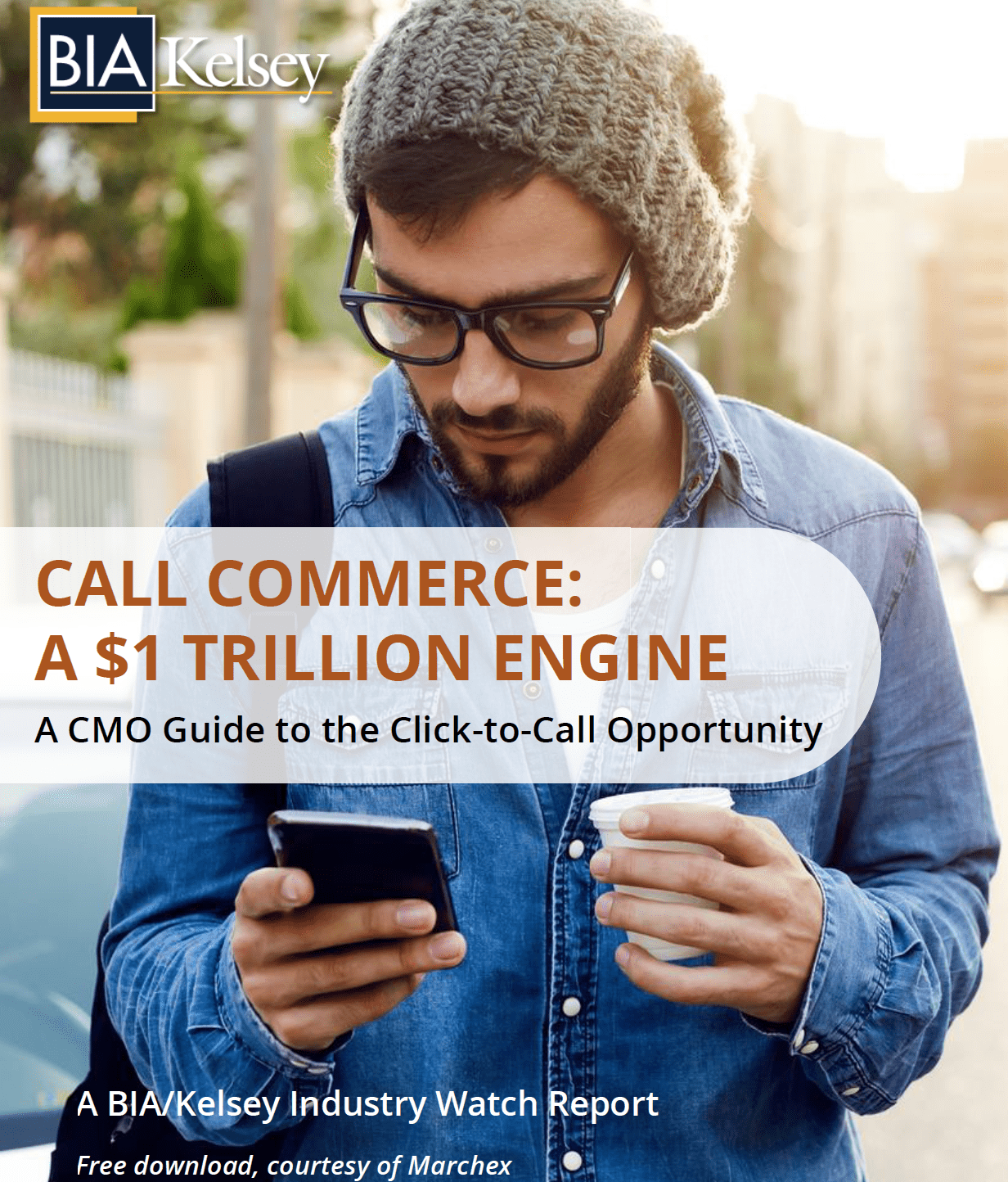BIA/Kelsey Bytes are excerpts from research reports. This is the latest installment from the recently launched report, Call Commerce: A $1 Trillion Economic Engine. The report can be downloaded for free here.
Quantifying Call Commerce
BIA/Kelsey estimates that mobile calls represent 60 percent of inbound calls to businesses in 2016. This equals 85 billion global mobile calls annually, a figure that will grow to 169 billion by 2020.
The growth is partly due to an increase in calls per user. But most of it will come from click-to-call reaching new users through many of the ways explored further below, including international expansion and social media. Mobile’s share of business calls will likewise grow with these factors.
Where Do Calls Originate?
Mobile calls are directly launched from search (paid and organic), traditional display (banner ads), native-social (paid and organic), and landing pages (including apps and email). Search drives the highest direct call volume due to its commercial intent, while traditional display will grow the least.
Native-social is perhaps the most notable call category. Defined as content that merges with the scrolling feed-based interfaces of social apps like Facebook and Instagram, it is the fastest growing mobile format in general. With respect to calls, it increasingly includes call buttons.
Messaging is also gaining ground. Previously comprising SMS only, the category now includes popular messaging apps such as Facebook Messenger and Snapchat, which are evolving from social communication tools to “conversational commerce” with businesses (explored below).
Landing pages show healthy growth as a call source as well. This is due to the mobile web’s evolution, as Google compels the world to optimize mobile sites, including calls-to-action like phone numbers. BIA/Kelsey also includes local and listings apps such as Yelp in this measurement, as well as email.
It’s important to note in these breakdowns that the calls measured are launched directly from a click-to-call button within the specified format. Therefore, any given format’s true impact is likely greater than shown, as it could influence calls that happen further downstream.
For example, search’s influence is bigger than the calls launched from search, because the click stream can proceed to a landing page where a call then happens. The same for goes for traditional display. As explored below, its impact exceeds the calls launched directly from banner ads.
The main takeaway is that the mobile formats that launch voice calls to businesses are broadening. This affects and informs anyone driving and tracking high-intent phone leads to businesses, especially in high-value call-centric verticals like autos and financial services.


